Last Updated on 18.12.2024 by hrushetskyy
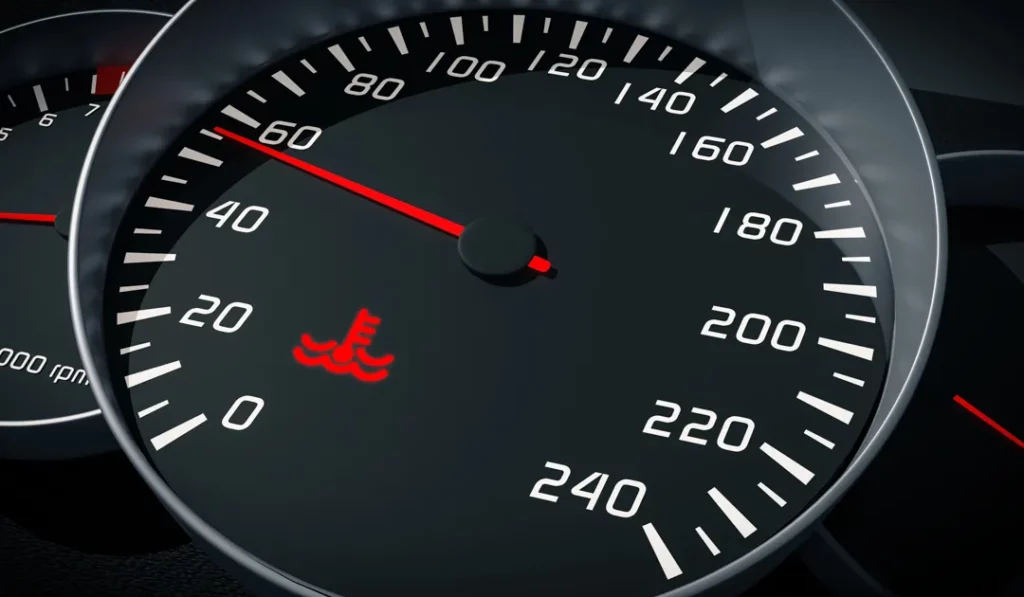
As motorists, we always dread seeing one of the warning lights turn on on our dash. That goes doubly for any of the red lights, especially the little thermometer light that indicates we probably have an overheated engine.
Unfortunately, this is a common issue that can lead to serious engine damage, with repair bills that can quickly add up. Our handy guide goes into detail on why your engine might be overheating, how to prevent it from happening, and what to do if the worst happens.
What’s the deal with an overheated engine?
Running a car things get very hot, and keeping it cool with regular air and coolant flow is essential. And even a healthy engine gets pretty hot – typically 195°F to 220°F (90°C to 105°C). So an overheating engine is when your car’s engine goes over about 220°F.
So what’s the risk? While a temporary temperature spike might not cause any immediate harm, long-term and regular overheating can seriously damage parts of your engine, including warped cylinder heads, blown gaskets, or even total engine failure.
You mustn’t ignore this problem as your repair bills can soar along with your temperature gauge, and a bill of $2,000 or more isn’t out of the question. And if you ignore the problem it can lead to long-term damage to your entire engine, shortening its usable life.
How your engine’s cooling system works
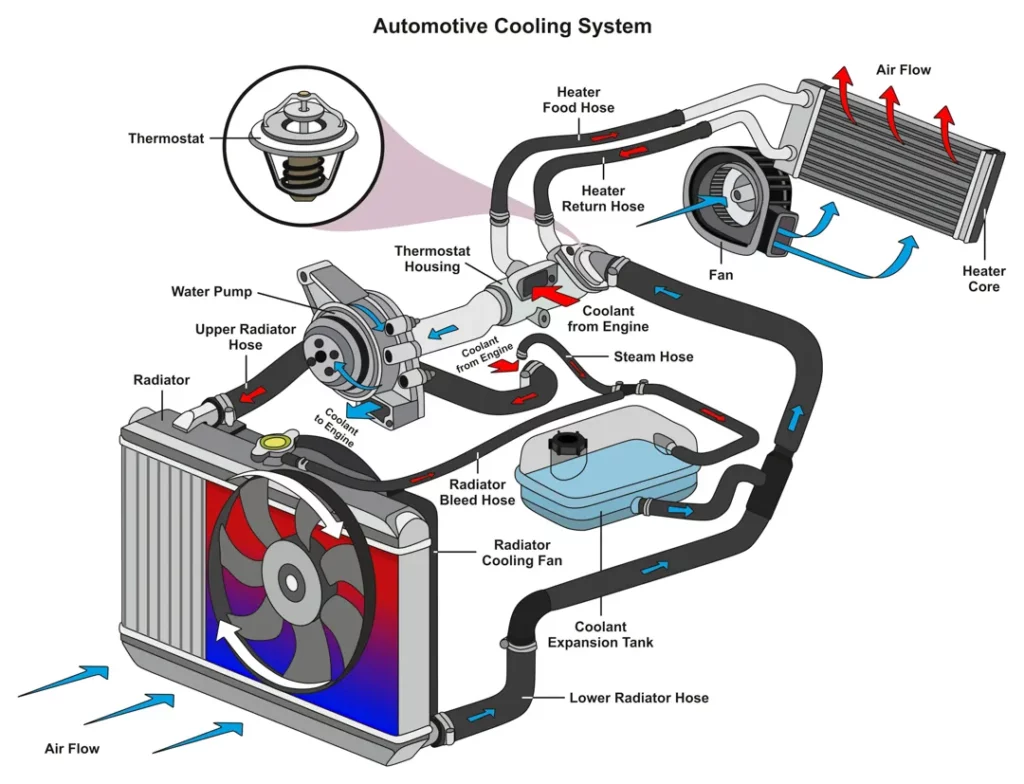
So now we know that keeping your car cool is important, it’s useful to understand a little bit about how your car’s cooling system works, keeping everything at the right temperature. Inside the workings of your car are a few crucial components that keep things cool:
- Radiator: Your car’s radiator is what we call a heat exchanger in that it removes excess heat from your engine’s coolant fluid and transfers it to the air, using either cooling fans or the natural airflow created as you drive.
- Thermostat: Like in your house, your car’s thermostat ensures the temperature in your engine remains at safe levels. It does this by controlling the flow of coolant, staying closed while your engine warms up phase, and then opening to allow coolant flow once your engine reaches operating temperature.
- Water pump: Think of the water pump as the heart of the system, keeping coolant circulating through your engine and radiator at a flow rate of 20-30 gallons per minute.
- Cooling fans: When you’re moving natural airflow helps keep your radiator working, but if it’s especially hot, or your car is stationery you need fans to keep the air moving. You might sometimes hear them come on when you are at a stop light.
- Hoses and reservoir: If the water pump is the heart, hoses are the veins and arteries, circulating coolant through the system, reaching everywhere that needs cooling. Because coolant can expand and contract, the reservoir is needed to hold extra coolant, so you always have the right amount in your system.
Now you know about the components, let’s look at how they work together. Your cooling system operates on a continuous cycle. The coolant fluid passing the engine absorbs heat from it and then moves to the radiator to release that heat, before looping back to the engine to repeat the process. This steady circulation is essential to keep your engine within a safe temperature range, avoiding the problems that can come if your car overheats.
Maintenance matters
As you can see, your cooling system is a carefully balanced loop that needs to keep flowing correctly to prevent damage to your car. You might end up with leaks, blockages, or failing components if you ignore regular maintenance and routine checks This might include inspecting hoses for cracks or replacing coolant. If you do this regularly you reduce the likelihood of major issues by up to 40%. This is why we always recommend being proactive in your vehicle maintenance to avoid costly breakdowns and to keep your engine running smoothly.
Causes of an overheated engine
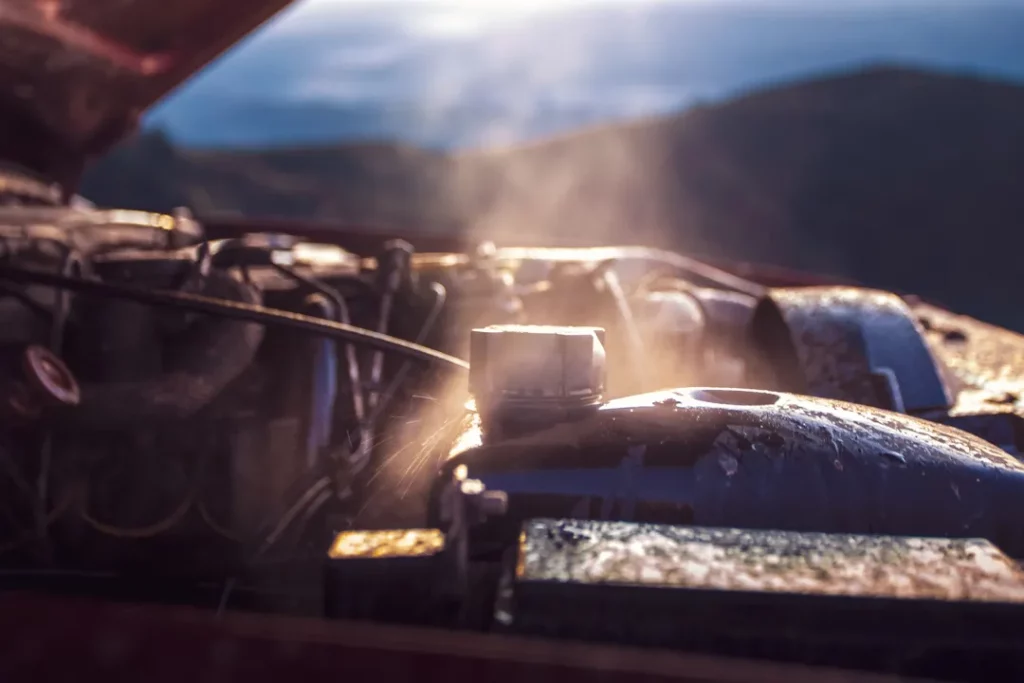
So now we know how the engine’s cooling system works, let’s look at what can go wrong with it. Common problems include:
- Coolant issues:
- Low coolant levels mean less fluid to absorb and transfer heat, so remember to check levels regularly.
- Old or contaminated coolant loses its effectiveness over time and replacing it every 30,000 miles or as instructed in your owner’s manual is essential.
- Thermostat problems:
- Thermostat failure means your thermostat doesn’t open up to allow the coolant to flow when the engine reaches around 195°F. This can cause rapid overheating and even lead to boiling coolant.
- Radiator problems:
- Clogs from debris or mineral buildup prevent your radiator from working effectively to reduce heat dissipation. Flushing your radiator every two years is a good idea to avoid these buildups.
- A leaking radiator lowers pressure in the system, so coolant levels end up too low which leads to ineffective cooling.
- Water pump failure:
- If your pump starts to fail, the coolant won’t get properly circulated, reducing its effectiveness. If you hear a high-pitched whining noise that could be a faulty water pump. Make sure to get your pump inspected regularly and replace it every 60,000 to 90,000 miles to avoid serious problems.
- Cooling fan issues:
- If the cooling fans stop working, especially when you’re idling, air won’t circulate through the radiator. Issues with fans are often down to a faulty motor or blown fuse.
- Blocked hoses:
- Your hoses can become blocked with debris or spring leaks and this will restrict coolant flow. You should visually check your hoses regularly for any signs of damage or soft spots.
- Head gasket leaks:
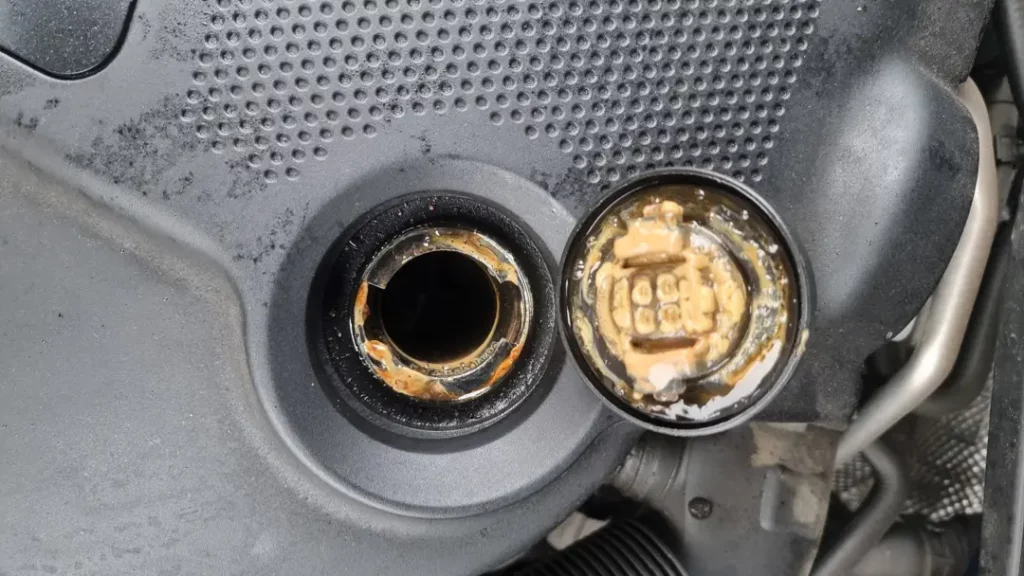
- The last words you want to hear from your mechanic are head gasket issues. A head gasket leak is a serious problem, that lets coolant escape or mix with oil, leading to overheating. Symptoms include white smoke coming from under the hood or the exhaust or a milky substance in the oil.
- Extreme driving conditions:
- When your car is overheating it’s not always due to a problem with the cooling system. Towing, driving up steep inclines, or in scorching temperatures can put extra strain on the engine leading to overheating.
- Low oil:
- We all know that oil is important to a car, but did you know it could also be a reason why your car is overheating? Old oil or low levels of oil can reduce lubrication and increase friction, affecting the engine’s temperature. You should always carry out regular oil changes every 3,000 to 5,000 miles to keep your engine healthy.
- Airflow blocks:
- Sometimes a simple problem, like dirt or other debris blocking your radiator or grille, can reduce the efficiency of your cooling system.
Risks of an overheating engine
You should never ignore your temperature gauge warning light going off, as overheating can lead to serious long-term problems with your vehicle.
Immediate effects
The first thing you’ll probably notice when your car overheats is a drop in performance. Your engine might start to misfire, and you may experience a loss of power. You may also notice some strange noises caused by premature combustion of the air-fuel mixture. They might sound like knocking or pinging noises, and they can damage parts of your engine if you don’t fix them quickly.
Possible engine damage
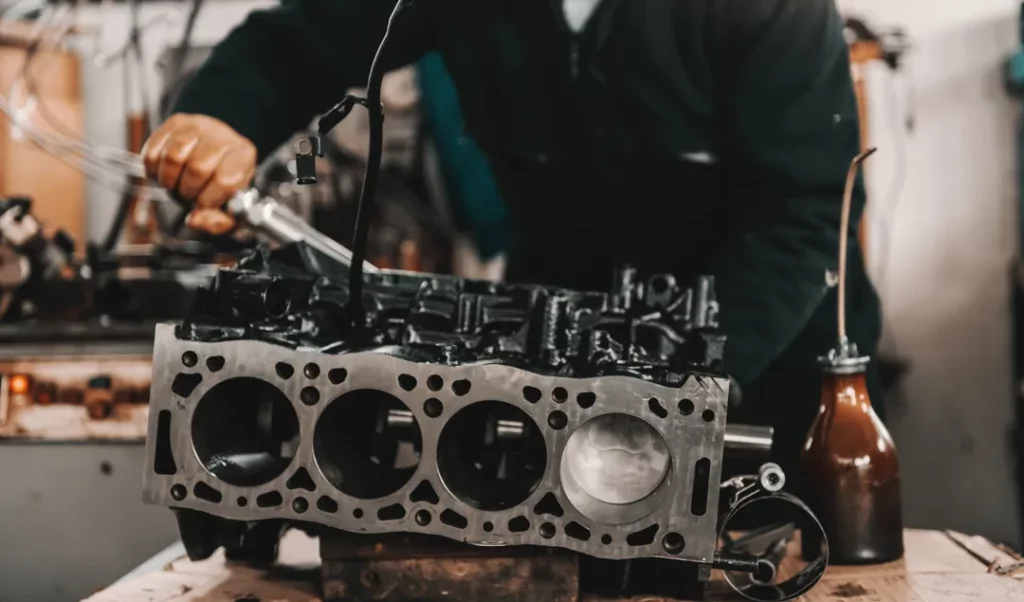
When your car overheats, the cylinder heads can become warped, and the head gasket may also be damaged, which in turn can cause leaks and further issues with performance. The heat can also damage your piston and cylinder wall, which can lead to decreased performance and increased oil consumption. Replacing these parts, if they become damaged by excess heat, can be very expensive.
Long-term effects
If you don’t take your car to the nearest repair shop and keep driving while it’s overheating, you may end up with a catastrophic engine failure. If your car overheats repeatedly, this may result in a cracked engine block or seized engine, which will require an entire engine rebuild or replacement – and you can only imagine what that is likely to cost. Did you know that ignoring overheating can reduce an engine’s lifespan by up to 50%?
What to do when your engine overheats
When your engine begins to overheat, you might see your coolant warning light coming on or notice steam coming out from under the hood. If that happens, you should:
- Pull over safely: Stop the car somewhere safe and turn off the engine immediately. Even if it’s hot outside, don’t keep the engine running to keep the air conditioner going. That won’t allow your engine to cool down properly.
- Allow the engine to cool: Wait for at least 30–60 minutes before checking your engine. However, you can open the hood immediately to help the engine cool down faster.
- Check coolant levels: Carefully open the radiator cap, ideally with a cloth, and check to see if your coolant is low. If it is, top it up to the marked level.
- Look for visible issues: Check your vehicle for visible leaks, damaged hoses, or loose or broken belts. Do this cautiously, as everything might still be very hot.
- Decide whether to call a mechanic: If you notice any serious leaks, this isn’t the first time your car has overheated, or you don’t know what the problem is, it’s best to take your car to a mechanic, ideally on a tow truck.
3 signs of engine damage from overheating
If you suspect overheating has damaged your engine, you should look out for:
- Strange noises: Knocking or ticking sounds might mean you have some warped components or bearing damage.
- Performance problems: As well as physical signs you might notice reduced engine power, rough idling, or frequent stalling.
- Leaking fluids: Look under your car and around the engine for coolant or oil leaks. If you see a milky substance in your oil that can be a sign of contaminated coolant, which may point to a head gasket failure.
While you may be able to spot some of the damage caused by your engine overheating, it’s really important to take your car to a mechanic as soon as you suspect any of these engine issues. They have specialist tools like pressure tests and compression gauges that can check your engine’s health accurately and even discover things that aren’t obviously visible.
Tips to prevent an overheated engine
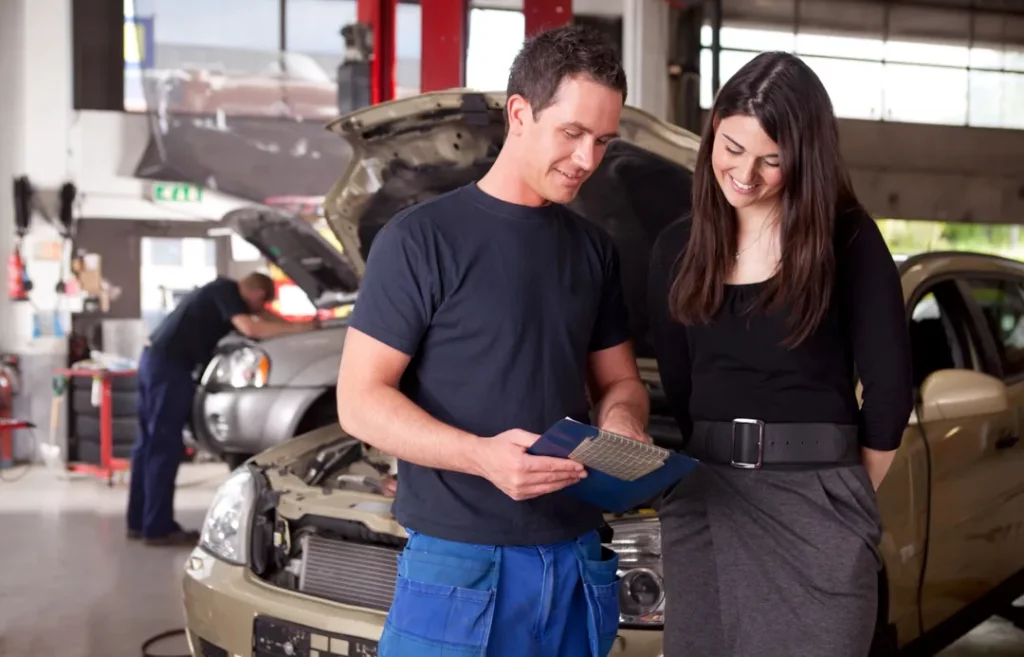
The best way to prevent overheating is to keep your car in good condition. Help you and your engine stay cool with these tips:
Routine checks
Inspect your car’s hoses, thermostat, water pump, and radiator regularly, and if anything is worn out, replace it immediately. This can extend your engine’s life by up to 30%.
Coolant checks
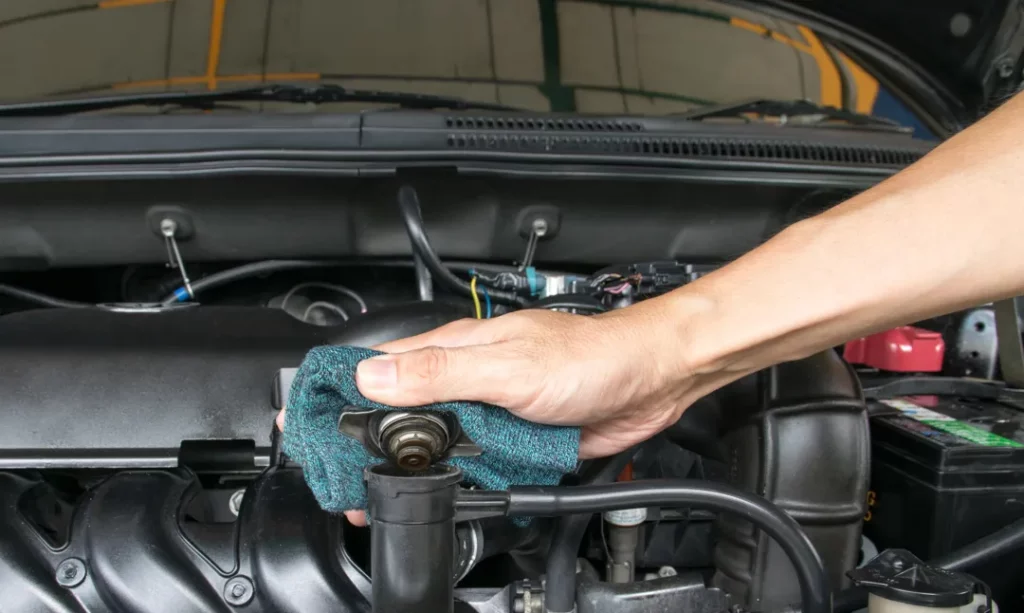
Check your coolant levels and if they are low, make sure to fill it up to the line. Also, look out for discoloration and debris in the coolant. You should also flush and replace coolant every 30,000 to 60,000 miles.
Seasonal checks
Make sure your fans are running and your coolant is full when the weather is hot and when it’s cold check your coolant has the necessary antifreeze in it. Doing this can prevent up to 70% of weather-related overheating issues.
Don’t ignore the little things
If your car is making strange noises, you see small leaks or notice a strange smell, don’t ignore it. You can save up to 40% on your repair bills by quickly fixing little things.
As you can see, you shouldn’t ignore engine overheating warning signs, as it can seriously damage your vehicle and end up costing you a fortune. Remember to carry out regular inspections and if you’re unsure, consult with a professional mechanic, to make sure your car keeps running smoothly.
Frequently Asked Questions
What are the first signs that my engine might be overheating?
The first signs of an overheating engine include a rising temperature gauge, steam or smoke coming from the hood, and strange smells or noises. If you spot any of these, pull over in a safe spot, let the engine cool, and check the coolant level—it’s better to address the issue early than risk costly repairs!
Can I continue driving if my engine is overheating?
No, it’s not safe to keep driving if your engine is overheating and it can cause severe damage that’s very costly to repair. If you notice signs of overheating, pull over, turn off the engine, and wait for it to cool down before you check the engine and coolant levels. If you’re unsure what’s causing the overheating or can’t fix it on the spot, we always recommend calling for assistance or having your car towed to a mechanic.
How often should I check my coolant levels to prevent overheating?
It’s a good idea to check your coolant levels at least once a month, especially before long trips or during extreme weather. Regular coolant checks can save you a lot of time, hassle, and money in the long run. Checking is simple—wait until the engine is cool, then look at the reservoir tank or radiator (if accessible) for the marked levels. If it’s looking low, top off with the recommended coolant type, and keep an eye out for leaks or discoloration, which might signal bigger issues.
What maintenance steps can I take to avoid engine overheating?
To avoid engine overheating, start with regular checks of your coolant levels and top it up as necessary. Replace coolant as recommended by your owner’s manual, which is typically every 30,000 to 60,000 miles. Inspect hoses for cracks or wear, as they’re essential for coolant flow. Ensure your radiator is clean and free from debris, and make sure your cooling fans are working, especially in hot weather. Keep an eye on your thermostat and water pump during routine maintenance too.
How can I tell if overheating damages my engine?
If overheating has damaged your engine, you might notice warning signs like a loss of power, rough idling, or frequent stalling. Unusual noises, such as knocking or ticking can also be a sign of serious issues. White smoke coming from the exhaust or a milky substance in your vehicle’s oil can also indicate a major problem. While these signs can indicate overheating damage, it’s best to have a mechanic inspect your vehicle thoroughly.
